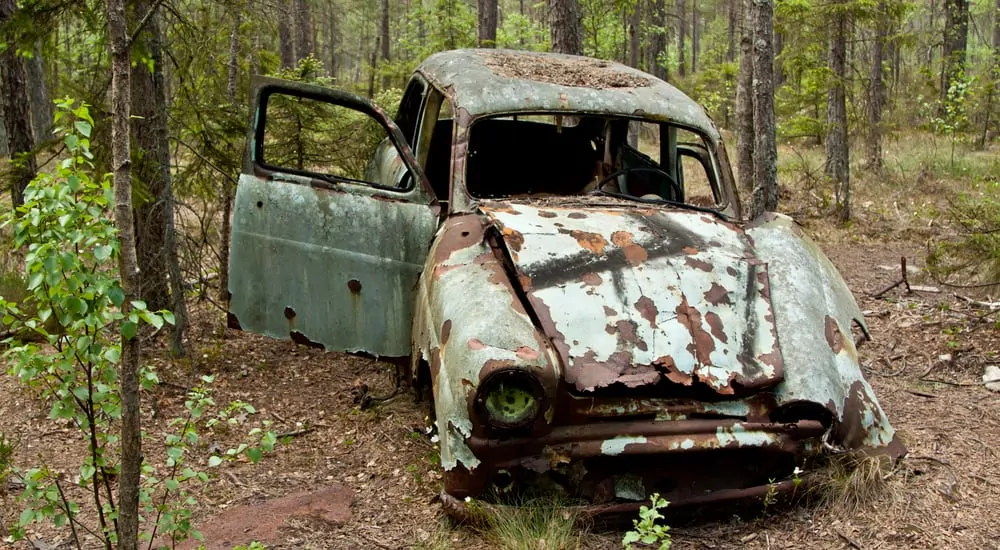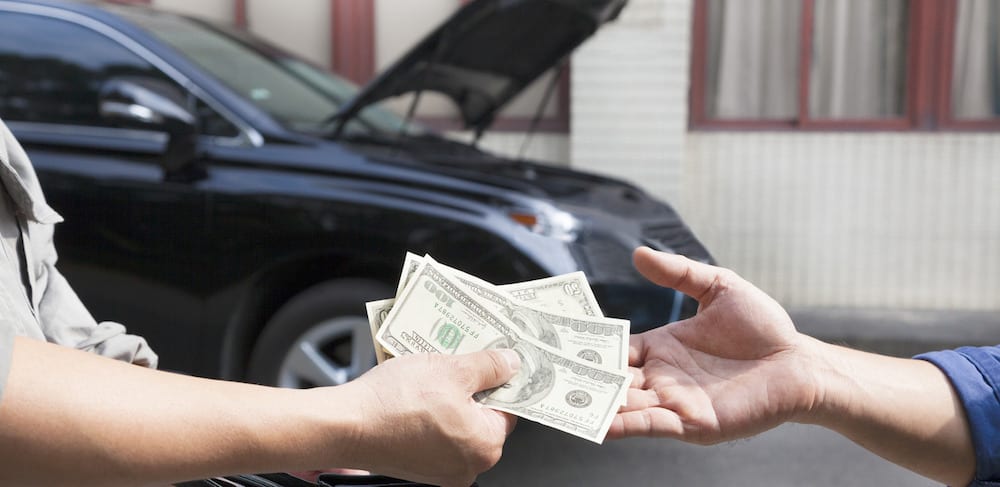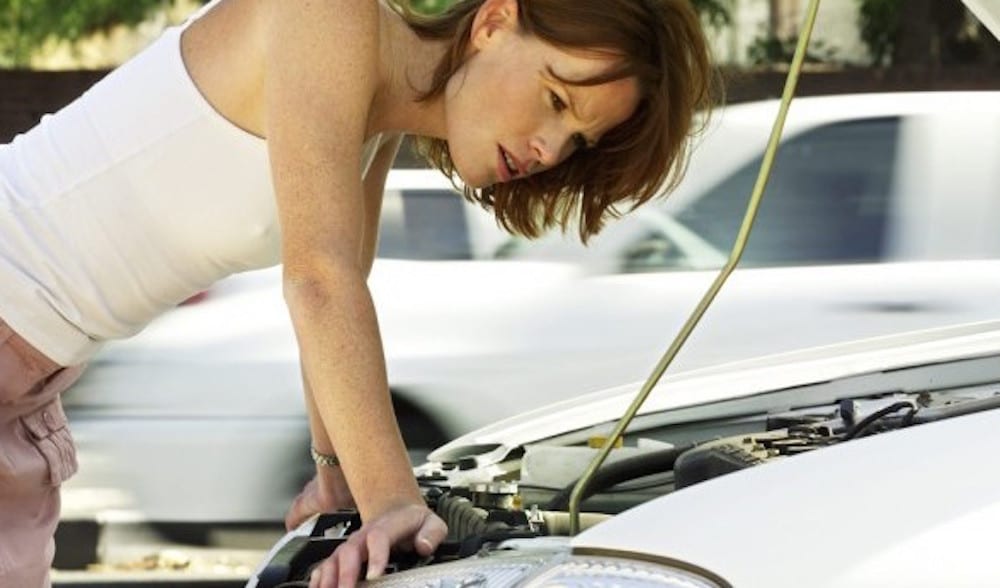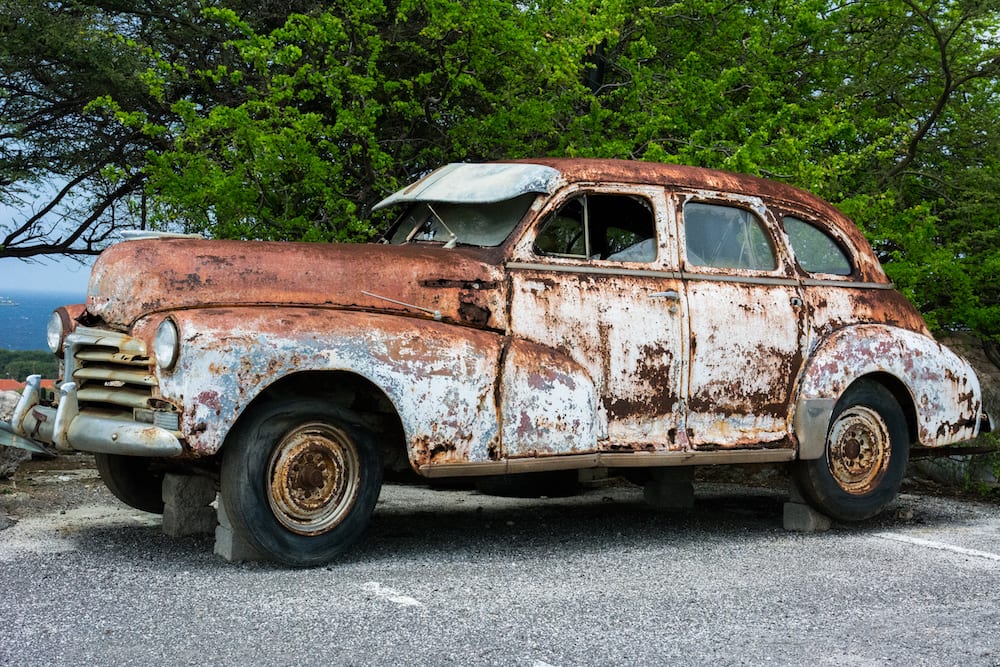The thought, “Man, I really just need to sell my car today for cash” might have started forming in the back of your mind months ago. But, you’ve ignored it. Why? Your car is sentimental to you, it was the first one you ever got, and you’ve made a lot of memories with it. Sadly, when reality decides to come knocking, that’s not a good enough reason to keep your car. If that idea has been in the back of your mind but you’ve been resisting it, then it’s time.
Whether it’s because duct tape is holding everything together or it just isn’t safe anymore, here are five sure signs that it’s time to sell your car.
It’s Held Together By Duct Tape… and Hope
Every single morning you wake up, you think about how excited you are to go to work in your ride because you love driving your car. Sure, it has its quirks and you understand that nothing is perfect, so you want to keep it around; when you look at it, you can’t help but smile.
When other people see you driving it, they gape at you in horror. Sure, it might be sentimental to you, but it’s a junky deathtrap to others. The rust is so bad, you almost don’t have a frame left; you have the remaining piece of your muffler held up with a piece of chain and duct tape; the A/C doesn’t work; there is a rotted out hole in the passenger side floor; and you have a makeshift wooden front bumper.
Not to mention every time you try to start it, you plead to the universe and say about ten prayers to whatever god(s) you believe in that it’s in a good enough mood to let you get to work safely and on time.
If any of this sounds relevant to your situation, then I hate to break it to you; it’s time to get rid of your car. You need to stop looking at it through rose-colored lenses, and see just how impractical and dangerous this car has become.
Bottomline, if it’s held together by duct tape and hope, then you don’t have a choice anymore.
Repairs Cost More Than the Car Itself
You still think of all the fond times when you first got your car. Cruising around when it was still in relatively new condition and how good it treated you. But now, you are shelling out money for repairs every month — and they are increasingly expensive.
It used to just be little things, like getting a new CD player installed for your tunes, or having the leaky A/C unit tinkered with. But now, your car’s refusal to go into reverse properly is foreshadowing a much more serious problem.
You also notice your car is slipping gears and there is a lack of urgency when you try to accelerate. It’s acting sluggish for a reason and it’s because your transmission is going. No matter how much fluid you put in it, it keeps happening.
A transmission is the most expensive repair/replacement made on your vehicle. Which means, if you got the car for $1,500 all those years ago, expect to pay much more than that to replace the transmission.
It’s not just the transmission either. Maybe your car isn’t passing inspection (again) this year and some of the repairs for a vehicle to pass inspection can be costly. I’m not talking about replacing the headlights, but repairs like ball joints, tie-rod ends, control arms, or even a catalytic converter will cost you a lot of money.
For example, replacing a catalytic converter will easily cost you $1,000 or more. Add that on to anything else that needs to get repaired for inspection and you are throwing a lot of money into a high risk with little reward scenario. If it cost you more than a grand just to put it on the road for a year, what else could break during that year?
My point is, when the repairs begin to cost more than the car itself, it’s not worth keeping anymore.
It No Longer Meets your Needs
This old beater might have served you well for when you were still living at home, but your life is changing — faster than you realize.
You just moved into a new house with the love of your life and you two are having a kid in five months. An old rust-bucket deathtrap isn’t a good car to drive your kid around in. That means it’s time for a new car – most likely an SUV or a minivan so that you can safely and properly take your kid to school in the morning.
Or, maybe you just got a new job; congratulations! But, this new job requires a longer commute. Now instead of driving five minutes downtown, you need to drive 45 minutes into the sticks. To make matters worse, you are driving a truck from the 90s. Even with the lower gas prices today, that fuel economy made with 90s technology is going to be a guzzler. Therefore, you need a newer car with better gas mileage.
If your life is changing, and your car no longer meets your needs, then it’s time to sell it and grab one that does.
Parts Are Hard to Find, And Expensive
Every year that goes by is like a slow dagger being pushed into the heart of your car; it’s going to be killed off eventually, you just aren’t sure when. All macabre analogies aside, your car is becoming outdated by the year. Everything in the car world changes so fast, particularly the car parts.
For example, Ford switched over to aluminum frames for their trucks. It requires a whole different set of tools and know-how to repair those types of frames; it’s nothing like working on a steel frame. Because of this, regular tools and personal knowledge gleaned from repairing your old F150 of days gone by won’t cut it anymore.
Because of this, you can bet they’ve also decided to phase out the older parts required for these vehicles as well. Now, the price of these parts has gone up tremendously compared to what they once were, on top of being more difficult to find.
It could also have nothing to do with the shift in an auto manufacturer’s parts. Maybe parts are expensive and hard to find because you’re driving a car made by an auto maker that went out of business – Saturn, for example.
Regardless of the reason, if the parts are expensive and hard to find, then sell it while you can. Because, no one will want to buy a car if they can’t get parts for it.
You Don’t Trust It Anymore
Finally, you just don’t trust it anymore. You find yourself dreading trying to start it on a cold morning or driving it home in the snow or rain. Or, maybe you don’t like driving your friends or loved ones around in it because you fear for their safety. If your car gives you a sense of unease, trust your gut because it’s probably right.
Even if this car represents something important to you, holding onto it isn’t safe. It’s time to sell it and get something that you can rely on.
Or, You Just Want a New One
Maybe these five signs don’t apply to you, but you just have this feeling that it’s time for a new car. It’s not a surefire reason to sell your old one like the others on this list, but it could be a sign. Maybe it’s because you are craving that new car smell with all the perks of hopping into a 2016 vehicle. Or, you could just be fed up with your old ride for numerous, but non-fatal reasons.
While this being fed up is more of a subjective sign, the other ones aren’t. The bottomline is, if you can relate to any of the five signs above, then it’s time to sell your car.
In a perfect scenario one should never feel a compulsion to think, “I need to sell my car today for cash”. Even if we assume that you live a blessed life, comforted by sound financial planning (and devoid of unexpected, costly emergencies) I’m a firm believer that an immediate need for cash should only come in situations where (i) someone from your dark past has returned to kidnap a loved one, or (ii) simply because concert ticket prices are just out-of-control.
And while it’s no secret that a large segment of our population struggles with financial stability, the need for immediacy can come into play in geographic areas with little-to-no public transportation. Even in such areas, most people need to work in order to survive. And it is, of course, a base expectation of most employers that their employees show up timely, regularly and ‘as expected’. A fair expectation, indeed. And yet, what happens when a struggling employee’s vehicle begins to fail, proving no longer reliable? It’s the beginning of a cyclical issue which could render that individual without transportation, unemployed, and even less financially secure than before.
Granted, that scenario is an extreme example, but it’s not entirely uncommon. More common is the individual ill-prepared financially to replace a failing (or ‘no longer functional’) vehicle. If the vehicle is still functional, the owner might scramble – in response to the ‘writing on the wall’ – to sell it, and get the failing vehicle off their hands ASAP.
At the end of the day, most of us could be more diligent in the ownership and maintenance of our vehicles, as well as noting signs of any decline in performance. In doing so, we reduce the chance of falling victim to such extreme scenarios as those listed above. We also empower ourselves for improved financial planning, making it easier to plan our transition from one vehicle to another, with little-to-no urgency (or fiscal risk).
So, with that in mind, let’s look at some of proverbial ‘writing on the wall’. Take note, because any one (or combination) of these signs might be heralding the need to say goodbye to one vehicle, and hello to another.
Did You Know?
The average length of vehicle ownership is estimated to fall in around 79.3 months for new vehicles, and 66 months for pre-owned vehicles. At 5-7 years, it appears that many drivers are trading in vehicles sooner, than ever before. That said, the average age of vehicles on the road with you everyday is estimated at about 11.6 years which implies two things. First, the frequency with which people are purchasing previously owned vehicles. Second, that a combination of engineering improvements and diligent maintenance make extended lifetimes likely for most of today’s vehicles.
Our point in beginning with this is that everyone’s situation will be different. There’s nothing wrong with the decision to lease, or trade in vehicles prematurely for the opportunity to drive something newer. If nothing else, this provides a great opportunity for a second-owner to enjoy a vehicle that might have otherwise been outside of their budget. But it also means that, in the right hands, an older (or previously-owned) vehicle can offer long-term reliability.
This highlights something that we often say: the unique demands of one’s lifestyle. From needs and wants to budgets and timelines, every situation is different.
Bring the Noise
Even the most diligently-maintained automobile loses some degree of efficiency over time. And while such declines may be noticeable in terms of acceleration, horsepower or towing, it’s more likely that you notice wear and tear first. We’ll address the occasional (or frequent) dent or scratch later, but what about the unwelcome creaks, groans, grinds and whistles. Some might be solved with the replacement of worn components, be they ball-joints, brake rotors, shocks or struts, but other cabin noises are simply inevitable with time. That said, turn down your radio and listen to your vehicle. It might be trying to tell you something.
Wear & Tear
From dings and scrapes to salt damage, rust and corrosion, never forget that the unpredictability of the elements is working against you at all times. Ever whittling away at your vehicle’s structure, there’s no shame in acknowledging its increasing vulnerability. And while it does little to compromise the long-term dependability of many vehicles, unpoliced wear and tear ranks as one of the primary threats to your vehicle’s longevity.
To quote a colleague, a daily driver should never be “held together with duct tape and hope”. If a vehicle has aged to the point where it’s ill-equipped to retain control of all components, it’s safe to say that you’ve held on to it for too long. Don’t even get us started on the safety risk, because you’re inevitably endangering more than yourself (and that’s just not cool). That said, you wouldn’t let things go that far, would you? Of course not.
Cost of Repairs
If you make it a point to understand the changing valuation of your vehicle, noting both depreciation and where you stand in terms of paying it off, you understand what your vehicle is worth to you. With this understanding, it becomes easier to put the cost of any repairs into perspective.
While many repairs and preventative maintenance will be covered by warranty, the out of pocket cost of keeping your vehicle on the road should never exceed its actual value. With diligent maintenance, this should be a minor concern, allowing you to pay off the vehicle well-before any major repairs are needed. That said, there are no guarantees and when the repairs cost more than the vehicle is worth, that vehicle simply isn’t worth it anymore.
Availability of Parts & Service
Automotive Design and Engineering is an ever-evolving process, with changes made in terms of materials and components, and advances made in order to make vehicles more efficient, automakers might opt to discontinue certain parts and components. This can increase rarity and cost, even on domestic offerings.
In addition, such changes will have an inevitable effect on technician training, making it more difficult to find skilled and certified mechanics familiar with your vehicle. These scenarios, of course, are in the minority, but they do occur.
Life is Instructing You Otherwise
And while we could keep talking about the mechanical and physical ailments of a vehicle which might force you to consider a replacement, it’s far more common that life makes that decision for us. Major changes to our lifestyle can redefine our needs. Marriage. Children. New Jobs. Lengthier Commutes. Changes in geography. These are all factors which influence our choice of vehicles and should prompt a conversation as to whether or not your current vehicles reflects your changing needs. Addressing this earlier, rather than later, allows you to adapt your planning accordingly, minimizing stress in the long run.
So, What Do You Think?
Might you be in the market for a vehicle sooner, rather than later? Whether it’s part of your immediate plans or not is beside the point. It’s far more important to take a realistic and proactive approach in diagnosing the life-span of your current vehicle, if only to buy yourself time (if needed) in terms of financial and logistical planning. Hopefully, we’ve left you better equipped to do so.










